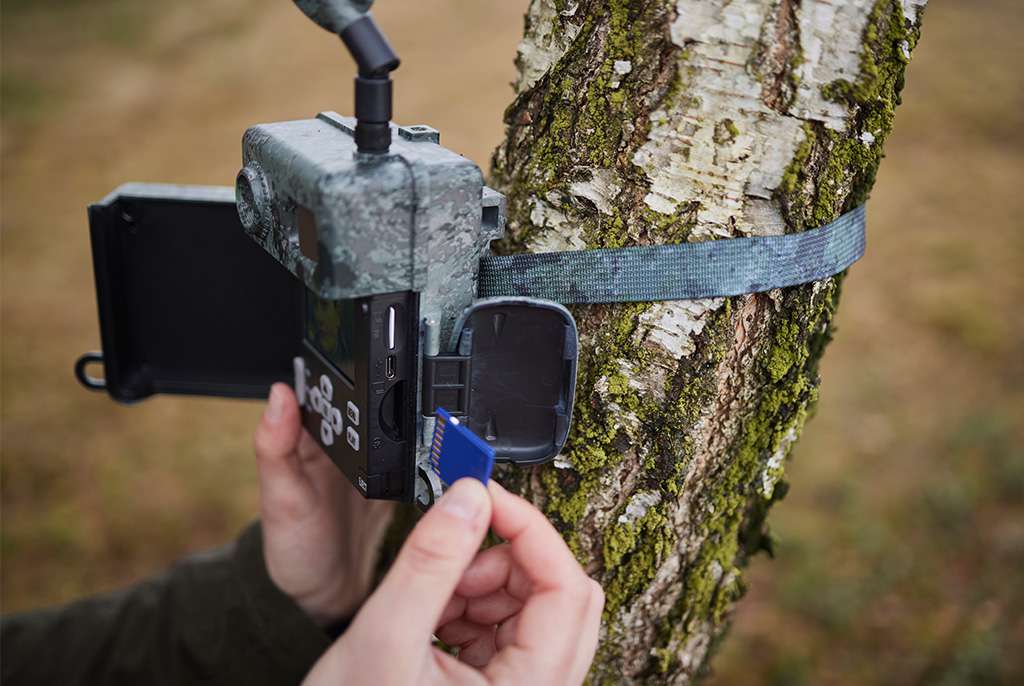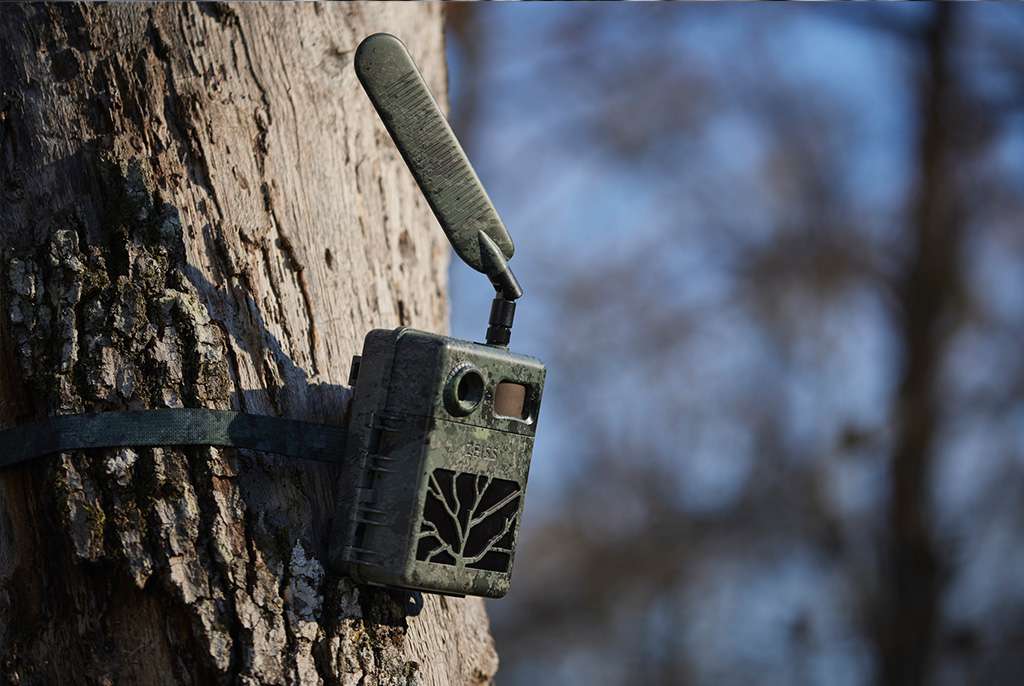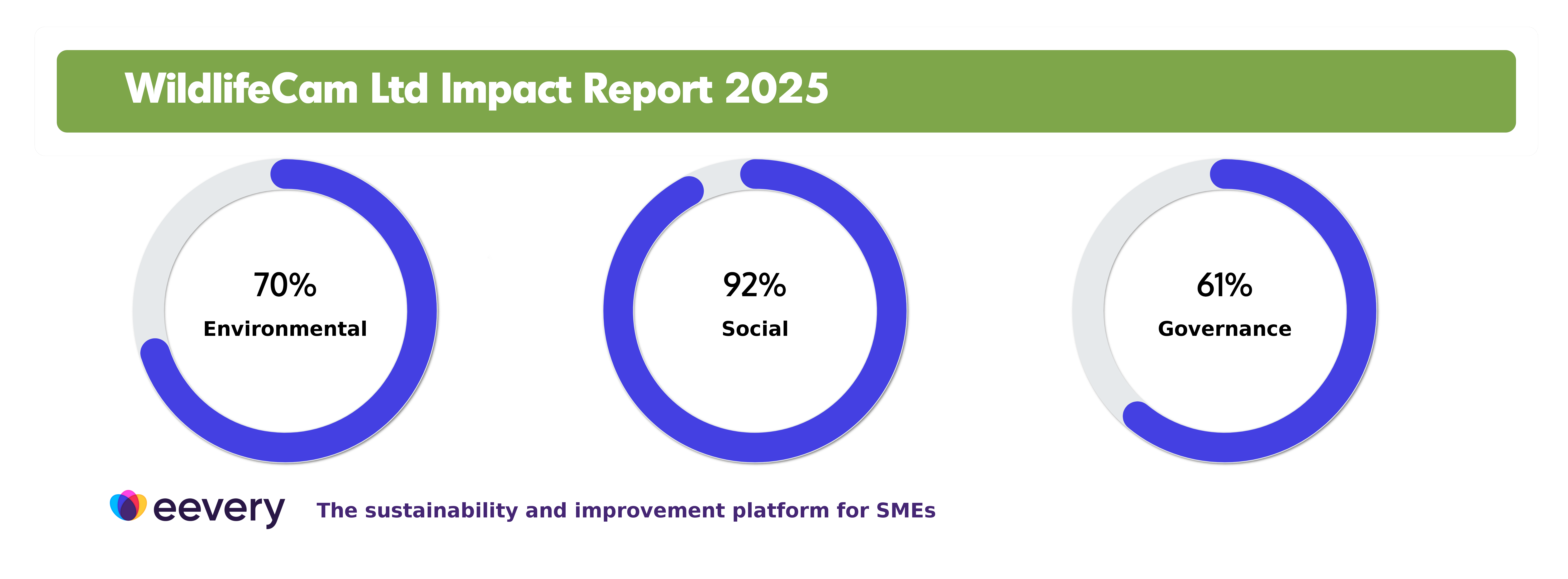Also known as trail cameras or camera traps, wildlife cameras are a fantastic tool for observing the local fauna. Most wild animals avoid humans, but high-quality wildlife photography and videography are possible with the use of the best wildlife cameras on the market.
Camera traps and wildlife cameras use a motion sensor to trigger recording, so users can set them up and leave them in place for a while. These tools are widely used by researchers and documentary filmmakers to gather evidence of animal behaviour and amazing images of rarely-seen creatures in their habitats.

You may have been inspired to buy a wildlife camera after seeing footage on top programmes such as Springwatch/Winterwatch, Our Planet or Countryfile. Choosing a wildlife camera can be confusing, however. This buying guide will help decode the jargon, so you can weigh up the options and see more of the amazing ecosystem around you.
Wildlife cameras work on the principle of “Set it and Forget it”: you set up the camera in position, choose the recording type and sensitivity, close up the case and walk away.
The camera uses a motion sensor to trigger recording photos or video footage. Any movement within the detection range will trigger the camera to record. Some cameras have a reaction time or trigger time of 0.7 seconds, so even fast-moving creatures are visible.
The images are stored on a memory card, and some models transmit to your phone or tablet.
These cameras have a sturdy external case that protects the inner workings. Open this case to find the control buttons. Many cameras also have a small LCD screen to help you navigate the settings and review images locally.
The majority of wildlife cameras are mounted by a nylon strap. You can easily secure the camera to a tree trunk, branch, fence post, drain pipe or another convenient environmental feature.
Many models also have 1/4in threads built into the base, to attach to standard tripods or brackets.
Wildlife cameras use long-wavelength infra-red “flash” to capture clear images day and night.
This is what allows you to witness the creatures foraging, nesting or exploring around your camera, even at night.
On most models, controls are hidden inside the waterproof casing of the camera. This helps seal the camera and protects the buttons from being knocked while you are away.

These controls allow you to select the recording type (video or photo), as well as any other additional features such as colour spectrum or time-lapse.
Some models allow you to adjust the sensitivity of the motion sensor to avoid picking up trees swaying in the wind, for example. Most trail cameras are triggered by heat and movement.
Making sure you get the right wildlife camera for your needs comes with understanding the specifications. Below, we explain the key features and benefits common to wildlife cameras, so that you can weigh up the options.
When deciding between the various makes and models, consider:
How you’ll use the camera:
Storage type
Your budget

With all high-technology items, there are a whole host of specifications to decode and compare between different models. This guide is designed to help you understand what each measure means and whether it is important to you.
The detection range or sensor range is the furthest distance at which the camera can detect motion. A shorter detection range narrows the chances of capturing any activity. However, a range that is too long can lead to many similar images triggered by activity that is too far to be seen easily, or by trees swaying in the breeze. A good middling detection range is around 25m.
Be aware that some models may have a shorter detection range at night due to the low light levels.
As we explained earlier, the flash is usually produced by infrared light, rather than a bright white bulb. The camera can capture black-and-white images without harming or disturbing animals.
“Flash range” refers to the distance reached by the IR flash. Objects outside of this range will not be illuminated.
The two types of infrared flash are low-glow and no-glow, sometimes called ‘covert infrared’. The difference is about 90 nanometers in wavelength, but the longer the wavelength, the dimmer the light.
Choose a wildlife camera with a quick trigger response time, so you don’t miss the moment. When the motion sensor detects movement, it triggers the shutter to start recording. The best wildlife cameras have <0.5-second trigger speeds, so even animals moving at speed will be caught on camera, but 0.7 seconds is enough to see creatures that are grazing, hunting or walking in the area.
This is the time required between one picture or video capture and the next. It is influenced by the processing power of the camera’s internal computer. Some cameras, such as the HikMicro M15, have a multi-shot feature, taking up to 5 photos in quick succession so you can choose the best.
The resolution describes the image quality, determined by the number of pixels per image. The more pixels, the more detailed and clear your image will be. A high resolution can indicate anywhere from 20 to 32 megapixels (MP), in which 1 MP = 1 million pixels. Fewer than 10MP can leave you with a grainy, unreliable image.
The field of view is the angle your camera lens covers. A wide-angle lens offers a field of view greater than 100°, showing clear visuals to either side. A narrow field of view would be approximately 35°.
The field of view (FOV) depends on the lens size, with a smaller lens providing a wider field of view due to distortion. For example:
Of course, it is no use setting up a wildlife camera if it will stop working in the rain. Look for IP65 waterproofing at a minimum to protect against water ingress.
Trail cameras use power. This may come from batteries or built-in solar panels. Alternatively, if you are planning to mount your camera in one location as a permanent fixture, a wired system may be more convenient.
Battery power:
Most wildlife cameras are battery-operated, and will last many months before depleting their power supply. Many can be powered with AA batteries, such as the Spypoint Force-20.
Beware of inefficient systems - you may spend less on a camera with a low mAh (milliAmp hours), but spend more on batteries. Look for >/= 2300 mAh.
Some cameras are flexible, with removable battery trays to use disposable batteries or rechargeable lithium-ion packs.
Solar power:
The most efficient and reliable option, cameras such as the Vosker V150 LTE are equipped with built-in solar panels that top up the rechargeable battery pack when in >50% sunlight.
Most cameras include extra functionality that may sway your decision. Possible features include:

Wildlife enthusiasts and researchers alike will be wary of privacy laws and rules about where cameras can be installed. As we understand it, you can use a wildlife camera in:
Our wildlife cameras cover a wide price range, between £110 and £500. At the top end of the scale, you can buy solar-powered wildlife cameras that transmit Live HD video via 4G LTE networks. (The Vosker V200-INTL even has AI image recognition, allowing it to discern between human and animal activity.)
Wildlife Cameras at the lower end of our pricing are still high quality. Even our cheapest wildlife camera has:
Find out more about the Spypoint Force 20
If you are looking for wildlife cameras on a smaller budget, there are risks to skimping on quality.
Beware of cheap wildlife cameras online: there is a slew of cameras priced at around £40 available on Amazon, built with cheap components and poorly constructed. Many of these brag of high megapixel cameras, when most use interpolation to achieve this, resulting in poor quality images. These cheap cameras also tend to have brighter infrared flashes, which may put off wildlife, and they also burn through AA batteries quickly, which can become expensive.
For the best results, invest in a high-quality camera that works efficiently and effectively.
Hopefully, this wildlife camera guide has helped you understand the finer points of our specifications and offered you an overview of what makes the best wildlife camera for your needs. Trail camera jargon can be complex, so look up any terms you aren’t confident about.
At Wildlife Cam, we stock a wide range of trail cameras and camera traps for remote wildlife observations. We work with well-known optics brands such as HikMicro, SpyPoint and Bushnell to provide high-quality wildlife cameras to the public. For any further questions about our products or deliveries, Contact Wildlife Cam or Search our FAQs for more support.


WildlifeCam Ltd is a credit broker, not a lender, and is authorised and regulated by the Financial Conduct Authority No 997540
We do not charge for credit broking services, we introduce you exclusively to Klarna
Shop and pay the Klarna way - join 150 million customers and choose flexible payments, lightning-fast checkout and secure shopping at WildlifeCam Ltd.
For more information please click here.